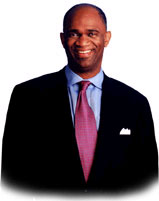 The Rev. Kirbyjon Caldwell has served as senior pastor of Windsor Village United Methodist Church in Houston, TX since 1982. During that time the church has grown from around twenty-five active members to over 18,000. Recently, the Rev. Caldwell was asked, by the United Methodist News Service, “What makes Windsor Village a vital congregation?” He answered:
The Rev. Kirbyjon Caldwell has served as senior pastor of Windsor Village United Methodist Church in Houston, TX since 1982. During that time the church has grown from around twenty-five active members to over 18,000. Recently, the Rev. Caldwell was asked, by the United Methodist News Service, “What makes Windsor Village a vital congregation?” He answered:
When I came in 1982, I shared with the administrative council then that we were going to do three things, and we’re still trying to do those three things, almost 30 years later. First, have a strong education ministry — not just on Sundays with Sunday school, but during the week — dealing with secular needs of the people because that’s what John Wesley did. Second, have a winsome worship service; and third, reach out to children and youth.
That was a three-legged stool that I suggested we sit on, and it didn’t have anything to do with how many people we had. But let me be very clear about this: Just because you’re bigger doesn’t mean you’re better. I know some lousy big churches, and some great small churches. It’s about the size of your commitment and your heart and your faith in the Lord.
So What?
Churches that do well often have a clear sense of purpose. They are local bodies of believers with a shared vision who live into their future in intentional ways. These focused and growing congregations known that they cannot be all things to all people nor can they afford every possible ministry equal priority.
What items are atop the list of priorities in your local congregation? How long have they been there? Does the life of the congregation (including facility, budget, staffing, and communications) consistently reinforce their role?
For more on this idea, read my review of Dave Browning’s Deliberate Simplicity: How the Church Does More by Doing Less (2009).